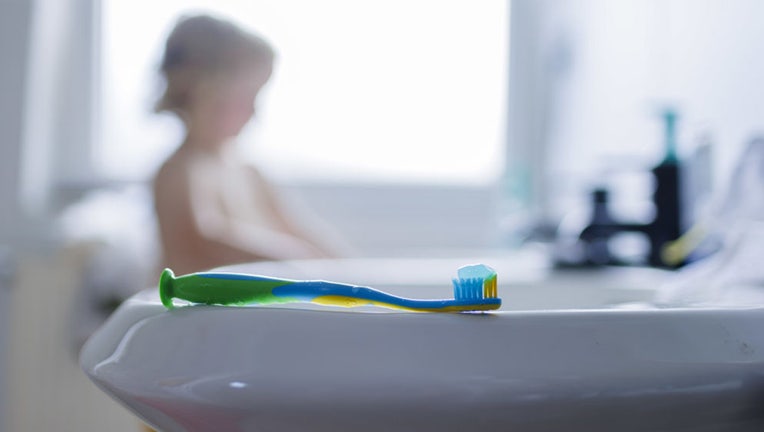Cavities in children could increase by millions if fluoride is banned, study suggests

FILE - In this photo illustration a child is in the bathroom to brush its teeth on July 10, 2024. (Photo Illustration by Ute Grabowsky/Getty Images)
Researchers created a model to estimate the impact a ban on fluoride in the United States water supply would have on children’s dental health and the results are bleak.
The simulations estimated that a ban would result in tooth decay in 25.4 million more teeth, which is equivalent to a decayed tooth for one out of every three children over the next five years. The results were published in Jama Health Forum on May 30.
"There’s strong evidence from other countries and cities, such as Calgary in Canada, showing that when fluoride is eliminated, dental disease increases. Our study offers a window into what would happen in the United States if water fluoridation ceased," Lisa Simon, MD, DMD, and senior author of the study, said.
More cavities and more costs
Why you should care:
Not only would eliminating fluoride increase the occurrence of tooth decay, but the estimated cost of dental care would rise exponentially, according to the study.
By the numbers:
The models simulated the potential dental care costs over five and 10 years.
- $9.8 billion in additional dental care costs over five years
- $19.4 billion in additional dental care costs over 10 years
"Most of the increased cost could be attributed to publicly insured children, meaning it would be a direct public health cost," said Simon.
Fluoride and dental health
Dig deeper:
Fluoride strengthens teeth and reduces cavities by replacing minerals lost during normal wear and tear, according to the CDC. In 1950, federal officials endorsed water fluoridation to prevent tooth decay, and in 1962 set guidelines for how much should be added to water.
Fluoride can come from several sources, but drinking water is the main one for Americans, researchers say. Nearly two-thirds of the U.S. population gets fluoridated drinking water, according to CDC data.
The addition of low levels of fluoride to drinking water was long considered one of the greatest public health achievements of the last century. The American Dental Association credits it with reducing tooth decay by more than 25% in children and adults.
About one-third of community water systems — 17,000 out of 51,000 across the U.S. — serving more than 60% of the population fluoridated their water, according to a 2022 CDC analysis.
What they're saying:
"We know fluoride works. We’re able to show just how much it works for most communities and how much people stand to lose if we get rid of it," said Simon.
RFK Jr. on fluoride

RFK Jr. calls for end of fluoride in water
Health Secretary Robert F. Kennedy Jr. says he plans to direct the CDC to stop recommending fluoride in public water supplies. LiveNOW's Christina Evans breaks it down with the Howard Pollick, Director of Dental Public Health Residency at UC San Francisco.
Big picture view:
U.S. Health Secretary Robert F. Kennedy Jr. has said he wants communities to stop fluoridating water, and he is setting the gears of government in motion to help make that happen.
Kennedy has said he plans to tell the Centers for Disease Control and Prevention to stop recommending fluoridation in communities nationwide. And he said he’s assembling a task force of health experts to study the issue and make new recommendations.
Two states have already banned adding fluoride to public water systems. These include Florida and Utah.
The Source: Information for this article was taken from the Centers for Disease Control and Prevention website, a study that observed oral health and water fluoridation data collected from 8,484 children aged 0-19 which was published in JAMA on May 30, 2025, a Mass General Brigham news release about the study, and reporting by The Associated Press. This story was reported from Los Angeles.

